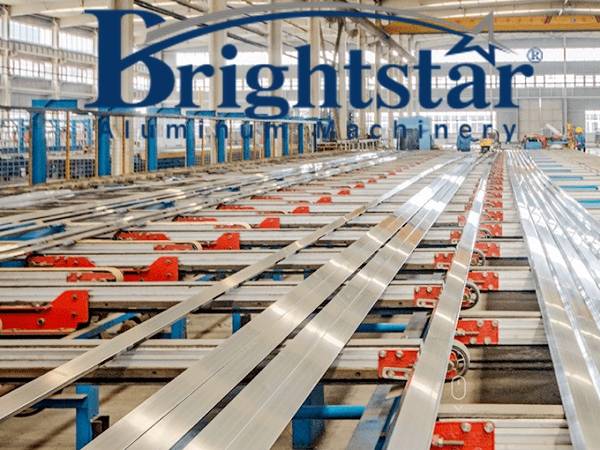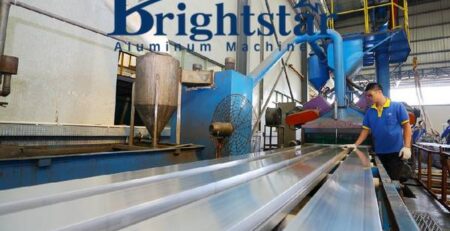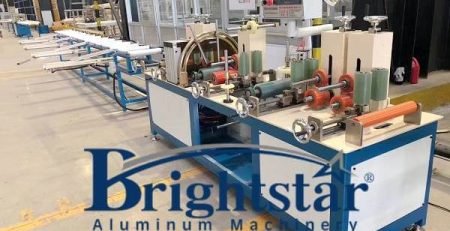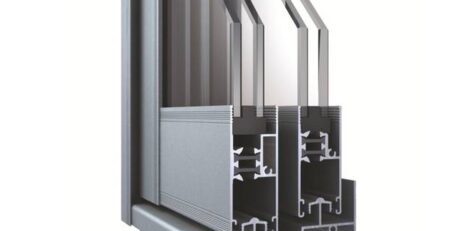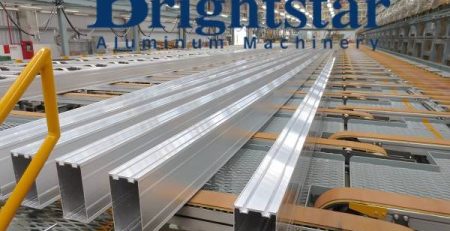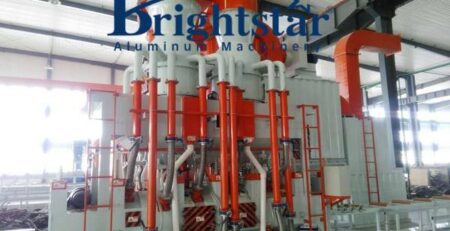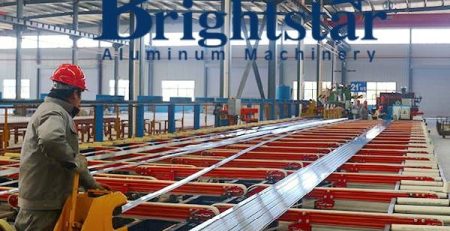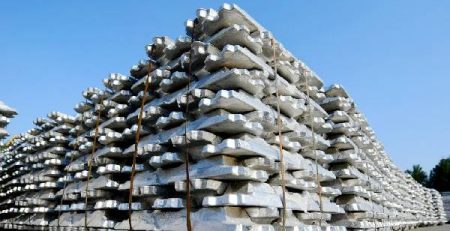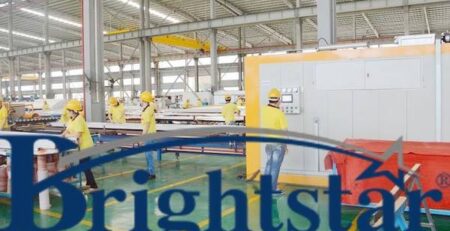Something you need to know about aluminum profile extrusion speed
Something you need to know about aluminum profile extrusion speed
Something you need to know about aluminum profile extrusion speed
Abstract:
The relationship between the extrusion speed of aluminum profiles and various factors is analyzed, and several new extrusion processes and product defects are introduced, and specific measures for the correct selection of extrusion speed are put forward.
Keywords: extrusion speed; influencing factors; product defects; solution
Extrusion speed refers to the outflow speed of the product or the speed at which the main ram of the extruder moves forward.
In actual production, the outflow speed of the product is controlled by adjusting the forward speed of the main ram.
Extrusion speed is an important factor affecting production efficiency and also affects product quality (such as product surface and size, etc.), so an appropriate extrusion speed is crucial.
The extrusion speed of 6063 aluminum alloy profiles (die outflow speed) ranges from 9 to 60m/min, among which the solid parts are 9 to 20m/min.
This article makes a simple analysis of the factors that affect the extrusion speed and how to control the extrusion speed.
The extrusion speed is related to factors such as alloy type, billet state and size, product shape, degree of deformation (or extrusion coefficient), deformation temperature, mold structure and process conditions.
1. Analysis of Factors Affecting Speed
1.1 The quality of casting billets
The quality indicators of aluminum billets are mainly first-grade grain size, less hydrogen content (below 0.1mL/100g aluminum), less slag and fine particles (remove slag particles above 0.008mm), uniform metallographic structure, no cracks, looseness, and pores and elemental segregation.
In this way, the plasticity and deformation of the billets are good, the extrusion force of the aluminum profile is reduced, and the extrusion speed is increased.
Otherwise, the extrusion speed will be slow and the die loss will be large.
1.2 Effect of Extrusion Temperature
When metal is extruded, as the temperature rises, the non-uniformity of metal fluidity will increase.
During the entire extrusion process, the temperature of the billets in the deformation zone also gradually increases, and the faster the extrusion speed, the higher the temperature, and the temperature rise can reach about 100C.
When the metal temperature in the deformation zone exceeds the maximum allowable critical deformation temperature, the metal will enter a hot and brittle state and form extrusion cracks.
Therefore, when the temperature of the billet is high, the extrusion speed must be gradually reduced during the extrusion process.
6063 aluminum alloy billets are generally preheated to 480~520C, and the extrusion container is preheated to 400~450C.
1.3 The shape of aluminum profiles
The impact of size and shape
The overall size and geometry of the aluminum profile have a significant effect on the metal outflow velocity of the extruded product.
The general rule is: the geometric shape of the product is simple, the symmetry is good, and the product with a small width-to-thickness ratio can be relatively higher;
on the contrary, the extrusion speed of the product with complex geometric dimensions, large width-to-thickness ratio, large wall thickness difference, and poor symmetry should be relatively slow.
Under the same conditions, the thinner the wall thickness of the product, the more uniform the deformation of the product along the cross-section, the smaller the tendency to produce extrusion cracks.
Therefore, the extrusion speed can be faster.
1.4 The effect of deformation degree
The greater the deformation degree of the product, the greater the extrusion force required, and the greater the heat of metal deformation, so the outflow speed of the product is slower;
On the contrary, the degree of deformation is small and the metal flow is uniform, and the extrusion speed can be faster.
1.5 Influence of mold structure
When extruding aluminum profiles, which type of mold core to use is determined by the characteristics of aluminum profile.
Generally, the solid shape adopts a flat die (Solid die), and the hollow shape adopts a porthole die.
For 6063 alloy, the solid die has less resistance than the tongue-type die or the porthole die, so the extrusion speed can be higher.
For the mold core with the same structure, the wider the working belt of the mold core, the greater the friction between the alloy and the working belt surface, the greater the additional tensile stress on the surface of the product, and the higher the tendency of extrusion cracks on the surface of the product.
Therefore, the extrusion speed needs to be reduced accordingly. Secondly, from the perspective of the surface friction between the metal and the core working belt, the harder and smoother the core working belt, the faster the extrusion speed should be.
2. New technology for increasing extrusion speed
With the development of modern technology, a new process to increase the extrusion speed has emerged, and new extrusion processes such as isothermal extrusion, Equipressure extrusion, constant speed extrusion, high-temperature extrusion, low-temperature extrusion and nitrogen cold extrusion have been developed.
2.1 Isothermal extrusion
Isothermal extrusion is a method of maintaining the constant temperature of an extruded section in the bearing zone of the die in order to get a high steady quality in mechanical properties.
Isothermal aluminum profile extrusion process: As the name suggests, the so-called isothermal extrusion is a combined process of temperature and extrusion speed under the premise of keeping the outlet temperature consistent
During the extrusion process of aluminum alloy profiles, due to the heat generated by the friction between the billet and the extrusion container and the extrusion deformation, the temperature of the extruded material is getting higher and higher.
The performance is uneven, and cracks are prone to appear on the surface of the aluminum profile if the extrusion speed is too high in the middle and late stages of aluminum production.
In order to prevent this temperature rise, an isothermal extrusion method is proposed to keep the temperature of the extrusion material outlet consistent throughout the aluminum extrusion process.
The isothermal extrusion method is especially suitable for the production of hard aluminum alloys such as 2000, 7000 and some 5000 series with low critical extrusion speed and some profiles with high surface requirements (solar frame, polished profiles, etc.).
First of all, to implement isothermal extrusion, the first is the gradient heating control system of the aluminum billet.
The billet gradient heating is to determine the heating temperature gradient of the billet according to the temperature difference between the front and back of the extrusion material during the extrusion process. The temperature gradient heating of the billet induction furnace is usually divided into several zones along the length of the heating coil, and the heating power of each zone is different.
Low-temperature gradient heating, the temperature gradient is generally 0-15 ℃ / 100mm. Long billet gas heating usually adopts the gradient cooling method after heating the billet out of the furnace, so that the billet also forms a temperature gradient in the longitudinal direction.
Secondly, the deceleration control of aluminum alloy extrusion is to gradually reduce the extrusion speed in the middle and late stages of extrusion to reduce the temperature rise of the extruded material.
This deceleration control is usually used for extrusion speed control of soft alloy materials, and the average extrusion speed of this control method is higher than that of ordinary constant speed extrusion.
In addition, it is also possible to take measures to heat the extrusion container in different regions.
The extrusion container is also provided with a cooling passage, and a spiral groove is set on the inner side of the outer casing (or middle casing) of the extrusion container close to the aluminum extrusion die, and the compressed air is passed through during the middle and later stages of extrusion to take away the frictional heat between the billet and the extrusion container, so as to control the temperature rise of the billet.
2.2 Low-temperature high speed extrusion process
Low-temperature high speed is to use the combination of lower aluminum billet temperature and the fastest extrusion speed to carry out the aluminum extrusion process.
The combination of process temperature and speed of this aluminum profile is inversely proportional, that is, the higher the temperature of the aluminum billet, the slower the extrusion speed, and the lower the temperature of the aluminum billet, the faster the extrusion speed. Under normal circumstances, the temperature of the first billet produced by the die is controlled at 420°C-440°C, and the temperature can be accelerated by the third billet.
The temperature of the flat die aluminum billet is kept at 390-420°C; It is best to keep the billet temperature at 410-440°C.
When the aluminum billet reaches the optimum temperature, the extrusion speed is determined according to the outlet temperature, and the optimum outlet temperature is 520-560°C.
That is to say, when the outlet temperature is lower than the optimal temperature, it should be speed up appropriately, and when it is higher than the optimal temperature, it should be appropriately speed cut.
At the same time, it is necessary to ensure that the quality of the mill finish profile is qualified.
There will be two problems during the execution of the low-temperature rapid extrusion process.
One is whether the quenching device meets the requirements of the quenching process.
The manufacturers can install an online quenching device and carry out air-cooling, spraying, and water-spraying quenching processes in partitions and grades, in order to achieve the basic mechanical properties required by aluminum profile.
The second is that during the high-speed extrusion process, especially the tail section, often because the temperature of the billet rises rapidly with the extrusion process, the metal will be overheated and overburned, and the surface of aluminum profile will appear cracks or aluminum profile will be damaged, resulting in waste.
At present, the general method to solve this problem is basically to use liquid nitrogen cooling mold technology to reduce the temperature of the deformation zone to solve the problem of deterioration of billet surface quality during rapid extrusion, thereby improving the yield and ensuring the implementation of the low-temperature high-speed extrusion process.
2.3 High-temperature slow speed extrusion process
High-temperature slow speed extrusion temperature is 500~520°C, and it must not be fast during extrusion.
This is because: firstly when the mold exit temperature is higher than 525°C and the air cooling is insufficient, the product often produces a large and coarse grain structure;
Secondly, magnesium and silicon cannot be completely dissolved, and the hardness and strength of the alloy are low;
Third, the Combination porthole dies, if the extrusion is too fast, the temperature is high, and the metal supply is insufficient, a loose structure will be formed along the runner line, which will be easily corroded and exposed during alkali cleaning, which will affect the quality of aluminum profile after treatment, so the extrusion speed should be slower.
2.4 Nitrogen cold extrusion process
During the extrusion process, cold liquid nitrogen stored in the tank is introduced to the working belt of the extrusion die.
First, it can reduce the contact friction between the product and the working belt of the mold core;
Second, it can cool the extrusion die and the deformation zone, and take away the heat of deformation.
At the same time, the exit of the mold core is controlled by nitrogen, which not only reduces the oxidation of the product surface, and reduce the bonding and accumulation of alumina.
Therefore, nitrogen cold extrusion not only improves the surface quality of the product, but also greatly increases the extrusion speed.
3. Effect of extrusion speed on product quality
In the extrusion production of aluminum profiles, due to improper extrusion speed, common scraps problems and causes are as follows:
Cracks: The extrusion outflow speed is too fast and the deformation speed is too fast, and the deformation tensile stress exceeds the tensile strength, which destroys the continuity of the structure and produces cracks, which often appear at the tail and edge of the product.
Needle-shaped white stripes appear on the surface: the extrusion temperature is high and the speed is too fast
Pitted surface: The extrusion temperature is too fast, the metal deformation is large, and the metal is easy to bond to the working belt of the mold core, causing the product to produce a pitted surface
Waves: Improper speed control, uneven flow velocity along the entire section of the extrusion die, and waves on the side that is too fast.
Size change: For hollow profiles with a large inner cavity or aluminum profiles with a large width-thickness ratio, the outflow speed of the front end of the product is too fast, resulting in the opening of the hollow profile. If the outflow speed of the front end of the product is slow, the hollow profile will be closing.
Extrusion funnel: The extrusion speed is fast, and the tendency of a metal to flow unevenly along the extrusion direction increases. At the end of the extrusion, the dirt on the surface of the aluminum billet enters the interior of the product, causing the extrusion funnel.
4. Conclusion
Extrusion speed is one of the important factors affecting the quality and economic benefits of profile products.
Through the above analysis, in actual production, it can be improved from the following:
*To improve the quality of aluminum alloy billet, adopt suitable extrusion process parameters and high-quality molds to improve product quality and efficiency;
*During production, the operator should properly control and adjust the extrusion speed according to the shape, size, degree of deformation, mold structure and process parameters of the product, so as to improve product quality;
*Actively study new extrusion technology to improve product quality and production efficiency.
Brightstar Aluminum Machinery provides not only aluminum profile shape corrector machine, aluminum profile wrapping machine and aluminum profile polishing machine, but also aluminum profile wood grain effect sublimation machine, and aluminum profile surface defects brushing and cleaning machine and aluminum profile shot blasting machine, etc for our customers.
Turnkey project and completed solution, package deal and one-stop service.


